Lea Wait's Blog, page 109
June 18, 2021
Weekend Update June 19-20, 2021
 Next week at Maine Crime Writers there will be posts by Sandra Neily (Monday), Dick Cass (Tuesday), Maureen Milliken (Thursday) and John Clark (Friday). Some Wednesdays from now on will be “Win a Book Wednesday” with giveaways, drawings, and announcements of winners. Be sure to stop by at mid-week to see what’s new.
Next week at Maine Crime Writers there will be posts by Sandra Neily (Monday), Dick Cass (Tuesday), Maureen Milliken (Thursday) and John Clark (Friday). Some Wednesdays from now on will be “Win a Book Wednesday” with giveaways, drawings, and announcements of winners. Be sure to stop by at mid-week to see what’s new.
In the news department, here’s what’s happening with some of us who blog regularly at Maine Crime Writers:
from Kathy Lynn Emerson: I finally have my author copies of I Kill People for a Living, my collection of essays gleaned from posts originally published here at Maine Crime Writers. Look for an opportunity to win a copy on the June 23rd “Win a Book Wednesday” post.
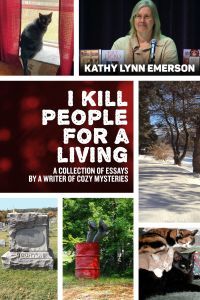
An invitation to readers of this blog: Do you have news relating to Maine, Crime, or Writing? We’d love to hear from you. Just comment below to share.
And a reminder: If your library, school, or organization is looking for a speaker, we are often available to talk about the writing process, research, where we get our ideas, and other mysteries of the business. We also do programs on Zoom. Contact Kate Flora
June 17, 2021
Conspiracy Theories: A Tool For Crime Writers
A recent NY Times essay explains a widespread human behavior crime writers can put to good use: 1) people like conspiracies that go along with their beliefs and 2) there is some truth to every conspiracy theory (which makes them more believable).
A few conspiracy examples: A lone shooter didn’t kill Kennedy, A scientist may change their mind which is suspicious, UFOs are out there, the Army caused Lyme disease.
My response to these claims and (the underlying truths):
• The President’s Assignation: Given what happened it’s not surprising there are doubts that Oswald acted alone when President Kennedy was assassinated. Instead, many still believe that Fidel Castro, the Mafia, Russia etc. must have been responsible. (It is true that Castro etc. had plenty of reasons to dislike Kennedy).
• Scientists are always changing their mind and that is suspicious. (Yes, many scientists modify their claims, but it is in light of new data, ideas, plus other scientist’s questions and comments. That’s how good science is done).
• UFOs exist: (According to a recent Pentagon document, many reports fail to provide sufficient evidence for such events. UFO sightings can essentially always be tied to terrestrial or celestial phenomena, such as lights from human-made vehicles and reentering space junk.)
• Lyme disease is an escaped military bioweapon: Theoretically, this is possible because ticks do carry infectious agents that could be used as biological weapons. (This is unlikely because Lyme would be nonlethal and therefore ineffective against an enemy as opposed to chlorine gas, etc. Also, ticks require hosts which may well not be dense enough to ensure its spread.)
Numerous popular novels feature conspiracy-based real events including:
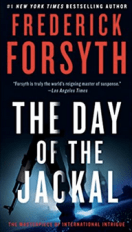 “The Day of the Jackal” by Frederick Forsyth is based on the attempt to assassinate French president Charles de Gaulle by a right-wing extremist group. Forsyth was there on the ground in 1962 when a right-wing extremist group known as the OAS made one of its most brazen attempts on the General’s life. The novel remains a very popular thriller.
“The Day of the Jackal” by Frederick Forsyth is based on the attempt to assassinate French president Charles de Gaulle by a right-wing extremist group. Forsyth was there on the ground in 1962 when a right-wing extremist group known as the OAS made one of its most brazen attempts on the General’s life. The novel remains a very popular thriller.
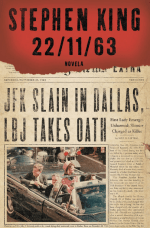
“11/22/63” by Stephen King is a science fiction epic in which a Maine high school teacher time-travels to September 9, 1958 and struggles to change the outcome of Kennedy’s assassination.
Dan Brown’s popular 2003 novel “The Da Vinci Code” draws on conspiracy theories involving the Roman Catholic Church and Opus Dei. 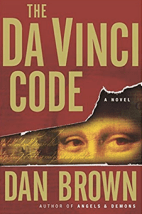
June 16, 2021
Someday is Now
Kaitlyn Dunnett/Kathy Lynn Emerson here, once again writing about the story behind a story. Brace yourselves—this is a long and winding tale.
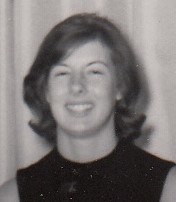
believe it or not, this is me in 1965
When I was a senior in high school, way back in 1965, I had a wicked crush on a boy in my class. Unfortunately, he thought of me only as a fellow member of the stage crew for our school-wide production of The Music Man. Since I was an extremely shy kid, at least around boys, I should have been happy with “one of the guys” status. Instead, I worked up all my courage and suggested that we join his best friend and the friend’s girl and another couple we’d been close to during the production to celebrate high school graduation. He let me down easy, but it was still a rejection. Worst of all, he told me that “someday,” if I “stayed as sweet and innocent” as I was then, I’d “make some lucky man a great wife.”
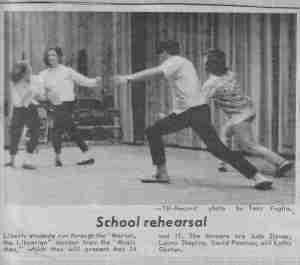
I was also choreographer for The Music Man
At seventeen, the last thing I wanted to be was “sweet.”
Some things stick with you. I started thinking about using that memory in a story in 1982, but it wasn’t until 1987, after I’d sold a young adult romance to Silhouette’s Crosswinds/Keepsake line and was encouraged to submit something else, that I actually sat down and wrote the first version of Someday.
It was the twentieth book I’d completed since I started writing seriously in 1976 and came in at 40,000 words, It was written in first person. I named my protagonist Kristy Russell and gave her love interest the nickname Sonny. Who was Sonny? Sonny was not my high school crush. He was a childhood friend who actually asked me out once in seventh grade. Unfortunately, he came down with a bad cold and had to cancel and that was the end of that budding romance.
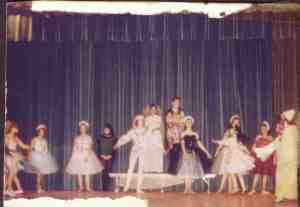 I shamelessly milked my diaries from 1964 and 1965 for details of high school, especially those related to working on The Music Man. I also cannibalized two unsold short stories. “The Tallest Girl” was based on my experience of being the tallest girl in my ballet class and the only one who didn’t take toe lessons. As a result I starred in our recitals for two years running—as the prince. The other story was titled “The Pink Earmuffs.”
I shamelessly milked my diaries from 1964 and 1965 for details of high school, especially those related to working on The Music Man. I also cannibalized two unsold short stories. “The Tallest Girl” was based on my experience of being the tallest girl in my ballet class and the only one who didn’t take toe lessons. As a result I starred in our recitals for two years running—as the prince. The other story was titled “The Pink Earmuffs.”
Someday sold to Crosswinds, my fifth book sale, and was scheduled to be published in December 1988. It had gone through copyedits and had a cover when Silhouette decided to stop publishing young adult romances.
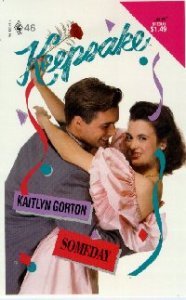
The Silhouette cover, showing a scene that is NOT in the book
That was a blow. By then I’d sold a third book to the line and now none of them were going to be published. On the bright side, I kept my advances and all rights were returned to me, but at that point I’d much rather have had books in hand. Never one to give up, I started submitting the manuscripts elsewhere. In 1992, a book packager took an interest in Someday and asked it I’d be willing to revise the book.
Of course I would. At that point my total number of published books was up to seven. I wasn’t about to say no to any possibility. Working with a developmental editor, my plot expanded to include a number of elements not in the original, including a rival for Sonny and a subplot concerning Project Graduation. I ended up with a better book, but not, unfortunately, one that the packager decided to buy.
This new and improved version racked up twenty-one rejections before I had my agent stop submitting it in 1998. In the meantime, I “borrowed” a few details to use as backstory in the category romances I was writing for Silhouette and Bantam’s Loveswept line.
Then the first e-books started to appear. In September of 2000, I did some minor revisions, ended up with a word count of 40,831, and began to query e-book publishers. Star Writer Publications requested the manuscript in November 2000 and less than a month later I received word that an offer would be made after the holidays. I duly signed a contract, although it did not provide an advance against royalties, and the book was scheduled for February of the following year. I was assigned a copy editor. Unfortunately, what she saw as grammar and usage absolutes conflicted with what I regarded as Kristy’s voice. Then, in May, Star Writer Publications sold out to RFI-West. In August, RFI-West informed me that my contract was invalid and sent me a new one, which I declined to sign because it was a really bad deal. I was notified that the original version rights had reverted to me but I could not use their edits. As if I’d want to!
That was the end of Someday‘s second sale to a publisher.
Too stubborn (or too stupid) to give up, I did some minor revisions of my own, including setting the story in 1992, and sent the book to a writer friend who was starting a new venture called NovelsNow. She produced a pdf edition and we created a cover using a photo of my niece seated at a computer, since Kristy tells her story by typing it into a pc. Sales were . . . less than stellar. Later, after NovelsNow was discontinued, Someday went to Belgrave House and became available in all e-book formats. It still is.

But I was still hoping for a print sale. I sent the file to my agent in 2008 (a different agent from the one who’d tried to sell it before), but her opinion was that it didn’t have much chance. She thought it was too slow paced “given the High School Musical phenom.” Although she liked the story very much on a second read a dozen years later, she hadn’t changed her opinion.
And there things might have stayed had it not been for the Covid lockdown. After I launched print editions of six other books for young readers (four previously published and two not), I did a bit more revising and came up with an 145 page book of 39,445 words to sell for $9.99 in trade paperback print-on-demand format. I also updated the cover, although it still features that photo of my niece. The text is the same as the e-book, although I did fix a few minor typos when I sent in the file for the POD, and the formatting is prettier. It is now available at Amazon, Barnes & Noble, and other outlets. Will people want to buy it? I have no idea. But I feel really good about the fact that it’s available if they do.
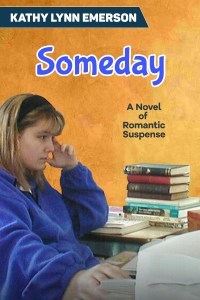
Interested? Do I have a deal for you! I you would like to order an autographed copy at the special price of $10 (postage included), just shoot me an e-mail at KaitlynDunnett@gmail.com and I’ll tell you how to go about purchasing one.

Kathy Lynn Emerson/Kaitlyn Dunnett has had sixty-three books traditionally published and has self published several children’s books and three works of nonfiction. She won the Agatha Award and was an Anthony and Macavity finalist for best mystery nonfiction of 2008 for How to Write Killer Historical Mysteries and was an Agatha Award finalist in 2015 in the best mystery short story category. She was the Malice Domestic Guest of Honor in 2014. Her next publication (as Kaitlyn) is the fourth book in the contemporary “Deadly Edits” series (Murder, She Edited), in stores in August 2021. As Kathy, her most recent novel is a standalone historical mystery, The Finder of Lost Things. She maintains websites at www.KaitlynDunnett.com and www.KathyLynnEmerson.com. A third, at A Who’s Who of Tudor Women, is the gateway to over 2300 mini-biographies of sixteenth-century Englishwomen, now available in e-book format.
June 15, 2021
It’s Win a Book Wednesday!
Susan Vaughan here with a book to give away. Two lucky readers who comment will win a copy of Always a Suspect. June is the 20th anniversary of this, my first published book. In 2001, this romantic suspense/mystery was titled Dangerous Attraction and was part of the Silhouette (Harlequin Books) Intimate Moments imprint. Here’s the book description.
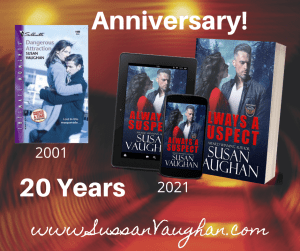
Is she a criminal or a victim? Or both?
After the deaths of two husbands and a fiancé, Claire Saint-Ange is branded the Widow Spider in her coastal Maine town. Tormented by threatening phone calls and desperate to prove her innocence, Claire hires a P.I. But her attraction to the rugged investigator poses an even greater threat. She can’t risk losing someone she cares about… not again. Never again.
Two tragic losses cause federal agent Michael Quinn to submit his resignation, but he’s forced into one last gig—investigate the widow’s connection to her last husband’s drug smuggling. Uncovering this lovely, mysterious woman’s darkest secrets should be just an assignment, but her gentle soul and passion break down his walls and make him long to believe in her innocence.
The frozen Maine landscape, deadly attacks, and shocking revelations test Claire and Michael at every turn—but it’s the blazing desire between them that threatens their very lives.
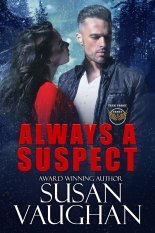
I had submitted to Silhouette a few times before selling this one to them. Editors said they liked the writing and the plot, but the characters’ conflicts weren’t strong enough. I doubled down with this manuscript, whose working title was “The Widow & the Cop.” As you can see from the book description, this time, my heroine has the strongest conflict possible. She believes that anyone she gets close to could die. This belief influences her relationship with everyone and holds her back from a full life. Until she hires Michael.
For a novelist, selling that first book to a publisher is beyond exciting. I was so thrilled I could hardly think and hardly remembered later what the acquiring editor said on the phone. I worked with a lovely seasoned editor who guided me and taught me. I met her and other publishing professionals at the Romance Writers of America conference the next summer when the book was published. A heady time.
Since the publication of Dangerous Attraction, I received the rights back, thus its republication as Always a Suspect in 2015. After that first book, I had five more romantic suspense novels published by publishers, and I published another ten independently. My sixteenth book, Genuine Fake, will be released later this month.  If you would like a copy of Always a Suspect, leave a comment below today. Two commenters will win, chosen tomorrow at random by my dog Sasha. If the winners live in the U.S., it can be either a digital copy of the book or an autographed print copy. If outside the U.S., digital only. If you are a winner, I will notify you in a reply to your comment.
If you would like a copy of Always a Suspect, leave a comment below today. Two commenters will win, chosen tomorrow at random by my dog Sasha. If the winners live in the U.S., it can be either a digital copy of the book or an autographed print copy. If outside the U.S., digital only. If you are a winner, I will notify you in a reply to your comment.
Texting Bees and Other Tales from the Road
Kate Flora: Okay, so maybe the title is a bit misleading, but read on, and you will hear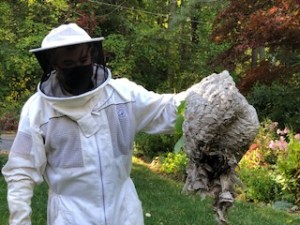 about texting and bees. In March, when we drive to Florida for a month, and during the months from April to October, when we’re in Maine, we spend a lot of time on the highway. Part of the fun of driving is watching other cars, and the people in them, and chatting about what we see.
about texting and bees. In March, when we drive to Florida for a month, and during the months from April to October, when we’re in Maine, we spend a lot of time on the highway. Part of the fun of driving is watching other cars, and the people in them, and chatting about what we see.
Those bees? Well, every year, various Maine crops require bees to ensure a harvest. For me, it is the commercial blueberry field in Union my husband bought me for my 55th birthday. According the most recent statement from the field manager, they rented 66 hives of bees for this year’s crop. A few years back, we were behind a huge flatbed truck stacked high with small square boxes, and all the boxes were draped with netting. Aware of the necessity of importing bees, I thought, “Beehives?” and as we got closer to the truck, I could see lots of bees buzzing around inside the netting.
When we passed the cab, we could see that the driver was texting. As a writer who is always thinking about crime and the police, I said to my husband, “Can you imagine what it would be like if that truck got into an accident?” A few months later, I read about a truckload of bees getting into an accident in Baltimore, so it wasn’t mere speculation. Imagine what that was like for the responding officers.
Another part of our driving fun is seeing the names of the various cars, and imagining a fleet with connected names. This morning we passed a car call an armada, and I said, “How can a single car be an armada?”
 One time, when we passed a pathfinder, we speculated about the rest of the fleet. Give the prevalence of deer along Maine roads, should there be one called the Deerslayer? Would there be a cute little car called a “Natty Bumppo?” What about a honking big SUV called the Chingachgook? (For more fun with Fenimore Cooper characters, read Mark Twain’s essay, The Literary Offenses of Fenimore Cooper here: https://www.gutenberg.org/files/3172/3172-h/3172-h.htm )
One time, when we passed a pathfinder, we speculated about the rest of the fleet. Give the prevalence of deer along Maine roads, should there be one called the Deerslayer? Would there be a cute little car called a “Natty Bumppo?” What about a honking big SUV called the Chingachgook? (For more fun with Fenimore Cooper characters, read Mark Twain’s essay, The Literary Offenses of Fenimore Cooper here: https://www.gutenberg.org/files/3172/3172-h/3172-h.htm )
A huge motorhome towing a very small car led to the idea of cars named after Winnie the Pooh characters, with the motorhome being the Kanga and the little towed car the Roo. But while we figured that someone might like to drive a Tigger, few would step up to purchase an Eeyore. (Which autocorrect insists on correcting to eyesore)
There there are the things that other drivers are doing. I once asked my facebook friends about things they had seen, and their adventures are far more risqué than mine. But still. There was the car ahead of me that kept stopping. Not on the highway this time, but on a city street. Each time, he would open his door, lean out, and spit. I finally realized that he was brushing his teeth while he was driving. Far more dangerous was the man in the car beside me who was using scissors to clip his nose hair at stop lights. I could only imagine what would happen if he were rear ended and the scissors went into his brain. The number of women applying make-up are legion, as are both men and women who are peering into the rearview mirror to brush or comb their hair. I imagine one of them saying, “Sorry, officer. I didn’t mean to run over that pedestrian but I couldn’t get my cowlick to lie flat.”
As the old song goes, Keep you mind on your driving, your hands on the wheel, keep your snoopy eyes on the road ahead. https://www.youtube.com/watch?v=DDYpr99FgEk
If you have a driving observation to share, I’d love to hear it.
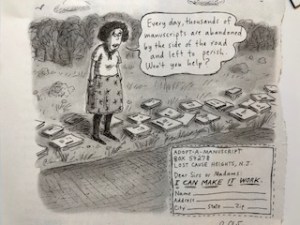
And a reminder. Today is the last day to enter our body contest. Don’t miss out!
Enter the Maine Crime Writer’s
2021
‘Where Would You Put the Body Contest’
How do you enter? Send a photograph of your chosen spot to: WritingAboutCrime@gmail.com with “Where Would You Put the Body?” in the subject line and the photo’s location in the body of the email. There will be prizes for First, Second, and Third place–books of course and other Maine goodies. You may enter no more than three photographs, each one entered separately. They must be of Maine places and you must identify the place in your submission. Photos must be the submitter’s original work. Contest will begin May 1st and will run through June 15th.
June 14, 2021
Carrying the flag
Sometime during the last century when I was a child, nothing pleased my sister and me more than coming upon a road construction project while in the car with our parents.  When we saw the first cautionary sign, we hoped for one-lane traffic because it could mean we would carry the flag. That’s what it was called. If you were a single car or the last in a line, a worker would hand in a small flag that you carried to the other end of the construction and passed on to the worker there. He (and it was always he then) knew that traffic could go through in the single lane in the opposite direction, back to where you had come from. My sister and I had an unstated agreement to take turns carrying the flag. One construction project might be a part of a larger program that meant we had several opportunities in a single trip, or it might be that weeks or even months would go by before the opportunity came again. But we knew which of us would get to hold the flag and pass it to the worker at the other end. We just hoped to get lucky and be a single car or be the last in the line.
When we saw the first cautionary sign, we hoped for one-lane traffic because it could mean we would carry the flag. That’s what it was called. If you were a single car or the last in a line, a worker would hand in a small flag that you carried to the other end of the construction and passed on to the worker there. He (and it was always he then) knew that traffic could go through in the single lane in the opposite direction, back to where you had come from. My sister and I had an unstated agreement to take turns carrying the flag. One construction project might be a part of a larger program that meant we had several opportunities in a single trip, or it might be that weeks or even months would go by before the opportunity came again. But we knew which of us would get to hold the flag and pass it to the worker at the other end. We just hoped to get lucky and be a single car or be the last in the line.
I don’t know when the change came, but by the time we were driving our own car with our son aboard the practice had evolved and flaggers at each end of a construction project used radios to control the flow of one-way traffic. Since my wife had similar memories of carrying the flag as a child, we of course regaled our son with stories that he no doubt found quaint. The use of radios improved efficiency, but not having the chance to carry the flag made the experience less fun.
At some point in the not too distant past the practice changed again. Today we find that traffic flow in many construction projects is controlled by temporary stop lights: no workers at either end, just a timed light signaling the moment to drive through the one-way stretch. Someone has obviously decided this approach further increases efficiency—and obviously reduces costs by eliminating the presence of flaggers at both ends of a project. 
So why do I find myself yearning for the opportunity to carry a flag—or, more precisely, to have my granddaughter enjoy that experience while we’re transporting her? Nostalgia, of course. Who doesn’t want to re-live one’s youth? And allow a new generation to enjoy a pleasure one had in the far past?
But I also think about this in a larger context. The development from carrying the flag to dual flaggers to temporary stop lights reflects trends in the economy:
*the substitution of capital (in the form of those temporary stoplights that some firm rents to contractors) for labor
*the increasingly impersonal nature of transactions and communications
*more humane working conditions, which surely benefit the women and men who used to stand for long hours in winter’s cold and summer’s heat to direct the flow of traffic.
That’s a mixed bag of negative and positive developments, and there’s little I can do to slow down the negatives and speed up the positive. But when I come upon a construction project that requires one-way traffic, I’m not really thinking about economic trends. I’m still hoping—fantasizing, really—that my granddaughter might be handed a flag that she can proudly carry. And tell that story to her child or grandchild.
June 11, 2021
Weekend Update: June 12-13, 2021
 Next week at Maine Crime Writers there will be posts by William Andrews (Monday), Kate Flora (Tuesday), Kaitlyn Dunnett/Kathy Lynn Emerson (Thursday) and Charlene D’Avanzo (Friday).
Next week at Maine Crime Writers there will be posts by William Andrews (Monday), Kate Flora (Tuesday), Kaitlyn Dunnett/Kathy Lynn Emerson (Thursday) and Charlene D’Avanzo (Friday).
In the news department, here’s what’s happening with some of us who blog regularly at Maine Crime Writers:
from Susan Vaughan: On Win a Book Wednesday 6/16, I’ll be giving away 2 copies of Always a Suspect. This month is the 20th anniversary of my first sale to Harlequin Books. Always was originally published as Dangerous Attraction. I’ve updated the technology, but mostly it’s the same story. Hope to see you Wednesday!
An invitation to readers of this blog: Do you have news relating to Maine, Crime, or Writing? We’d love to hear from you. Just comment below to share.
And a reminder: If your library, school, or organization is looking for a speaker, we are often available to talk about the writing process, research, where we get our ideas, and other mysteries of the business. We also do programs on Zoom. Contact Kate Flora
June 10, 2021
CASTLES ALONG THE RHINE
Or is it Castles in the Air? After that homebound year of 2020, I’m wishing for a trip to somewhere scenic and abroad. But even though my husband and I are both vaccinated, traveling is still a problematic proposition. So today I’m revisiting a Viking River Cruise we did in 2014. We’ve taken three, but this, our first, is still my favorite. You’ll see why. And yes, there’s a bit of a mystery. Why are there so many castles along the Rhine?
After leaving Amsterdam, our ship took us up the Rhine toward Basel, Switzerland. After the ship left Cologne/Köln, we sailed the Middle Rhine, the location of castle after castle on the heights above small villages and vineyards. Our first stop then was an eye opener. Marksburg Castle is the only Medieval castle on the Rhine to have survived intact.

Marksburg Castle
The oldest section, the inner keep, dates from about 1200. The great hall and the kitchen contain some of the original furnishings.
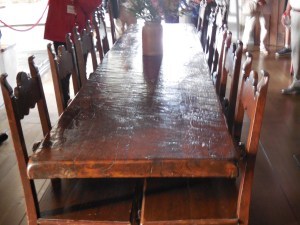
Dining table in Great Hall
The entry for knights on horseback featured rough cobblestones and a low overhead passage to make sure their arrival wasn’t for attack.
Knights’ entranceAfterward, we cruised on upriver. Seen from a cruise ship’s deck, the Middle Rhine seems like a journey through history. In rapid succession, we gawped at a pageant of vineyards, walled towns, and hills topped with castles. The ship’s program director announced their names, along with tidbits of history. Even though I still have the map and my photos, I cannot say for sure which castle is which.
Ones I remember were the Sterrenberg and Liebenstein castles, owned by brothers who hated each other, so the pair were called the Hostile Brothers. Thurnburg, or Burg Maus (Mouse Castle), gets its nickname for its diminutive size compared to Neu-Katzenelnbogen, or Burg Katz (Cat Castle).

I can’t guarantee my photos match any of those names. Most of the many castles we saw were ruins, some only a tower and others a few walls. Centuries of European wars and wars between rival nobles burned the wood and tumbled the stone. My binoculars picked out potted geraniums and patio umbrellas on a few, where enterprising contemporary owners had turned semi-ruins into B&Bs or restaurants. The Lorelei is not a castle, but a fabled cliff which towers over a bend in the river, narrow at this point to 350 feet. Tricky currents and rocks spelled disaster to many ships and inspired German poets to invent the “Legend of the Lorelei,” which told of a beautiful girl whose seductive song lured mariners to their doom. A statue of her commemorates the legend.
The Lorelei is not a castle, but a fabled cliff which towers over a bend in the river, narrow at this point to 350 feet. Tricky currents and rocks spelled disaster to many ships and inspired German poets to invent the “Legend of the Lorelei,” which told of a beautiful girl whose seductive song lured mariners to their doom. A statue of her commemorates the legend.
So why all these castles, which by my count number at least 20 in about 40 miles? Kings had their royal palaces, but many other nobles built castles and fortresses along the Rhine in order to defend their lands and enrich themselves. Along this narrow stretch of river, with steep hillsides blocking the wind, ships often couldn’t sail without help from land—animals pulling them along on tow paths. Knights and barons could fire cannons down on ships and demand taxes or cargo for safe passage. The origin of the term “robber baron.”

As I said, this was my favorite cruise. I’d do it again in a flash. But for now, I’m enjoying sharing the photos and memories with you.
The Coming Cashless Society and the Crime Novel
We live in a rapidly evolving world that is rushing headfirst toward a technological revolution. This means adopting a digital currency and moving toward a society where cash is obsolete and made irrelevant by laws. What does that portend for the future crime novelist? Will it change the way we chronicle criminal behavior? Will it render us as futurists and science fiction storytellers, seeing that everything in our lives will be moving over to technology?
And how will authors write about a society in which petty theft, burglary and drug transactions no longer occur on a regular basis? Will some form of black market currency replace the dollar and allow individuals to continue to pursue their darkest desires? What will happen to blackmail, robbery and extortion when digital currency makes ‘follow the money trail’ much easier.
These are fascinating questions for future and current writers of crime fiction. A cashless society, on the surface, seems like a good idea. The absence of hard currency will no doubt eliminate certain vile crimes in society, but at what risk? Do we really want the government—Big Brother—knowing what we spend our hard-earned money on? Or tracking our spending habits? What about tax evasion, the type Al Capone committed? And how will digital transactions affect the vice industries such as strip clubs, prostitution, drugs and pornography?
It might seem sad that I pay homage to the future loss of these criminal enterprises. As a human being, I recognize that it’s a positive development to watch these vice industries slowly fade away. The human tragedy that occurs from such degrading and dehumanizing activity is significant and worth eliminating. But this is our reality right now in certain pockets of the country. It reveals the disturbing darkness that lives in the hearts of many persons. It also reveals the general public’s complicity in allowing such horrible behaviors to perpetuate and simmer. Does that mean that authors decades from now will only be able to write about such activity through the lens of historical fiction? These are the questions I keep asking myself when considering future novels.
Cash greases palms and makes it possible for bad things to happen. It’s the engine that fuels aberrant behavior: behavior not fit for proper society. Cash facilitates crime, anonymously and with lightning speed, however repulsive these behaviors are. Digital currency will all but eliminate these unlawful actions. But will it cause humans to repress their desires and stop engaging in such risky behavior? Will the knowing eye of Big Brother shut the door to certain cash-based crimes that can only occur if there’s fiat currency?
As an author, I ask what will happen to the hooker with a heart? The neighborhood bookie who collects numbers and helps out the elderly people in his neighborhood? The corrupt politician who takes cash bribes on the sly in exchange for a desirable outcome? The local drug dealer? The purse snatcher? The pimp? Is there a more celebrated character in crime movies and novels as the pimp? Will the changing face of crime in the twenty-first century reflect these new realities or morph into something completely different?
I’m sure financial methods will change over time, as all things are wont to do. Thieves will learn how to manipulate this new technology and profit illegally from it. It may not be as violent as a street mugging, but it certainly will be more lucrative. Hacks will plunder cryptocurrency accounts and transfer these assets into personal wallets. They’ll steal digital fiat out of banks and financial institutions. Recently, the Colonial Pipeline paid five million dollars in cryptocurrency to retrieve breached information that was hacked from their website. Thieves ride the subway every day during rush hour, their devices skimming off NFC phones left unlocked by fellow passengers. These thefts are silent and lucrative, highly technological in nature and leaving no physical injuries behind.
As bad as I feel for the many victims of vice and violent crimes, I’m not yet ready to give up my cash and cede our privacy over to Big Brother. So I will continue to chronicle these stories. Maybe in ten years we’ll have a cashless society, but until then make sure to keep paying off your bookie’s nut and tipping your waiters and waitress. Cash is still gold to us writers. Thank goodness.

June 8, 2021
After The Fall/Coming Soon
John Clark elaborating on my fractured elbow adventure and a new look at Post-Covid movie possibilities, but first the elbow. Regular blog followers may remember the fun(?) we had clearing the jungle that was the back of our lot at the home in Waterville. Remnants of Asian Bittersweet vine still hang from several tall trees at the property line. They annoy Beth more than they do me. Two weeks ago on a Saturday afternoon, Beth was napping, so I took our very light ladder and leaned it against one of the oak trees. I had a pruning saw and a garden rake to pull the vines closer and cut them. All well and good until I leaned too far out for a vine and felt the ladder tilting earthward.

I was extremely lucky, able to twist away from the ladder and land flat. Seconds later, I’m looking at blood oozing from my arm and thinking I’m too damn old for this. The rake and saw were flung to the side, the ladder was atop my feet and I missed landing on the rock wall. At first, I thought I’d escaped with a sore elbow and some cuts, but three hours later, I accepted reality (well, as best as I’m able) and we headed to the emergency room. I got pretty fast treatment considering it was a Saturday night. Everyone was great and after CAT scans of my head and torso, plus X-rays of my right arm, I got the following diagnoses. Fractured elbow, bruised ribs, a spot on my lung that needs a followup, and a comment from the radiologist that had me chuckle: “Normal aging changes to the brain.” To which I replied, “Ain’t nothing normal about MY brain.”

After a lecture from Beth and a very fortunate followup the next day at the orthopedic clinic thanks to a cancellation, I was cast free and on the mend. As of today, the elbow is feeling just a twinge now and then, but the ribs are barking at me most of the time. Writing hasn’t happened, but gardening (Watching Beth run the rototiller was fun) proceeded on schedule, Mother Robin has started a second clutch of eggs in her nest on the back flood lights, and we’re building a new stone wall around the lower flower garden.
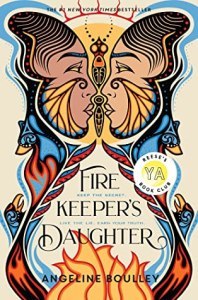
by Angeline Boulley
Before moving to movie titles, I want to share a great YA mystery I read last week. Firekeeper’s Daughter reminds me in very favorable ways of the late Tony Hillerman as well as the terrific author William Kent Krueger. It blends Native American mythology/culture with contemporary issues many teens face. Think fitting in, drug and alcohol abuse, family violence, prejudice and secrets. All of these are mixed together to offer readers a seamless and enthralling plot. It deserves a place on every library shelf.
Like many cultural venues, movies took a huge hit thanks to COVID-19. I envision a resurgence with many remakes/sequels coming soon. Below is a list of ones I’ve thought of, but I bet you can add plenty of your own.
2021: A Covid Odyssey
A Clockwork Outbreak
Alien?
Cool Mask Luke
Covidbusters
Crouching Tiger, Hidden Face
Dr. Strangelove or: How I Learned to Stop Worrying and Love the Epidemic
Ferris Bueller’s Day On
Finding Newmask
Foregoe (by the Cohen Brothers)
Gone With the Masks
How Clean Was My Valley
It’s A Wonderful Death
Mad Mask
No Country For Old Masks
Once Upon A Time In A Mask
Pandemic’s Labyrinth
Peter Pandemic
Saving Private Patients
Sickfellas
Star Wars: Episode IV – A New Mask
The Covid of Dr. Caligari
The Epidemic Strikes Back
The Eternal Safety of the Spotless Mask
The Innoculist
The Lord of the Rings: The Return of the Social Gathering
The Mask or the Red, White and Blue Death
The Mask That Saved Liberty Valance
The Maskchurian Candidate
The Not so Lone Ranger
The Sound of Mutation
The Texas Chainsaw Mask Removal
The Trumask Show
The Unmask of Zorro
Wear the Right Mask (Spike Lee)
Lea Wait's Blog
- Lea Wait's profile
- 506 followers



